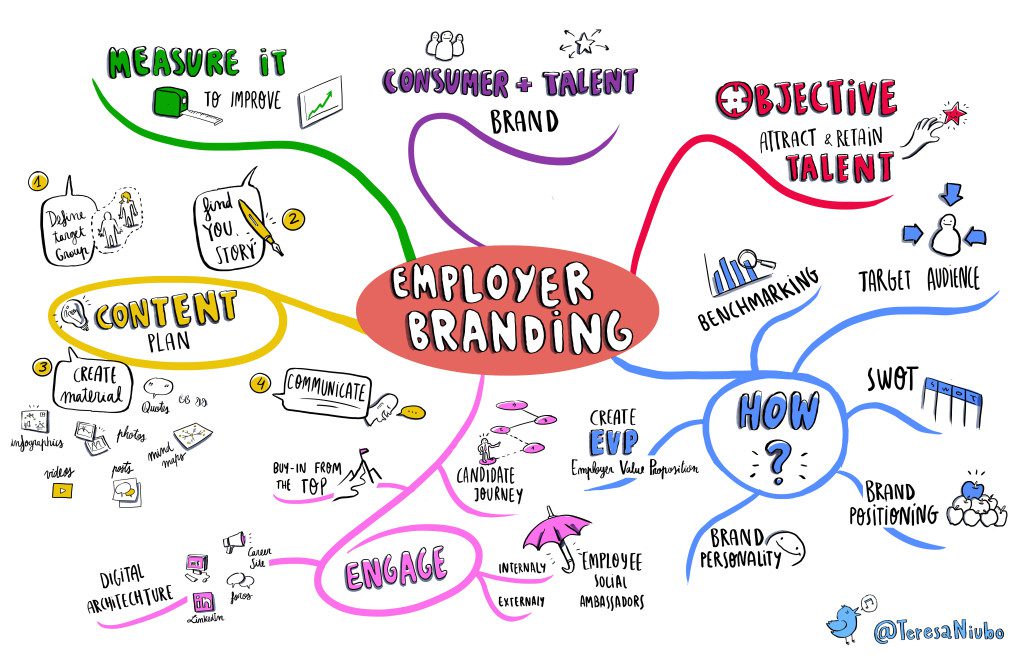Surprising employer branding statistics and how to use them?
Published

It is essential for recruiters to understand the importance and importance of employer branding in the hiring process. However, it is not always easy to convince customers. Nowadays, companies like to invest in resources and spend money on employer branding. However, employer branding can be a bit of a challenge.
And if you have ever lost a placement because of the potential Applicant If you don't trust your customer's reputation as an employer, you know how annoying that can be.
For companies without a robust, trustworthy and transparent employer brand, it is incredibly difficult to create a decent shortlist, especially in today's market of few applicants .
Let’s explore some key employer branding statistics and how you can use them to drive your recruiting business.
What is employer branding?

Those: hrpraxis.ch
Employer branding is the experience and reputation that companies create as employers. Simply put, a company's employer brand is its identity as perceived by the public, regardless of whether it is an accurate reflection.
Even if you haven't formulated an employer branding plan, your employer brand exists and employees experience it every day. However, there is a chance that your brand will be perceived differently than you want it to be.
In addition, an employer brand is based on several factors, such as: B. the policies, perks, rewards, benefits, and programs that a company offers to its existing employees and potential applicants.
A company's reputation is more important today than ever. Surveys have shown that 86% of people would not apply for or continue working for a company if it had a poor reputation. Whether or not you are currently monitoring and strategizing your employer branding, it is more important than you think.
Employer branding links every facet of a role to the company's policies, ethical standards and values, and most importantly, it does so naturally. This will help you stand out in a crowded and curated market and allow managers to attract, engage and retain the right talent. Weak employer branding can impact employee experience, retention, credibility and loyalty, which in turn affects the bottom line.
Why is employer branding so important?
From joining a gym to moving or even finding a new job, every decision (no matter how small or big) requires more thought and research than ever before.
Independent communities and rating portals are now at the forefront of many decisions. With the increased need for accountability, ethical business practices and transparency, it is essential to have and maintain employer branding.
By 2030, the demand for transparency, diversity and inclusion, responsible behavior and accountability, and giving employees a voice within their organization will increase. Employees will no longer rely solely on the voice of managers, but will want reports and stories from the people who make up a company and its culture.
Therefore, it is crucial to target an appropriate group of people. It is important that you stand up for your employees and create an authentic image of your company.
Thanks to review portals like Vault, social media channels (LinkedIn and Twitter) and Glassdoor, people are now looking through the A company's job page to make informed decisions. Many companies are also changing their approach to how they present their employer brand on these review sites and social media and are developing a new strategy.
8 surprising employer branding statistics

Those: meetfrank.com
Employer branding statistics are an important indication that your company's ability to create a solid employer brand is an important growth factor. However, posting vacancies on various platforms or designing an impressive careers page for the company is not enough to create a brand that resonates with potential employees.
Here are 8 statistics that show how important employer branding is for hiring:
- 92% of employees would consider leaving their current company if another employer/company with an excellent reputation offered them a job.
- 97% of the most attractive employers worldwide say employer branding is their top priority.
- 92% of employees say they would reject a job offer from a company with a bad reputation, even if they received a better salary package.
- 86% of job seekers find out about an employer's references and reviews when deciding whether to apply for a particular position.
- Solid employer branding minimizes costs/hiring 50% and staff turnover by 28%.
- Candidates trust a company's current employees three times more than the company to provide insightful information about what it's like to work somewhere.
- 96% of companies say that employer branding can impact sales and company valuation; however, only 44% are pursuing these impacts. For example, most medical companies are typically valued at 1.5 to 2 times their annual revenue.
- 62% of Glassdoor users agree that their perception of a particular company improves when they see their employer respond to a review on Glassdoor.
How can employer branding statistics be used to achieve business goals?
Now that you know some of the crucial statistics about employer branding and why it's so important, here's how you can use these statistics to win new business from your existing customers and prospects and ultimately your financial milestones and goals to reach.
Conduct an employer branding experiment
A major problem with employer branding is that bosses think that everyone knows their brand well and that they have a good status as an employer, even if that is not the case. A practical way, such Pursue A reality check is to highlight some aspects where they fall short compared to their competitors.
Use this information (combined with the stats above) in your business development emails to show that you've done your research and highlight how important these areas are in standing out and hiring the best talent want.
Use statistics in your sales pitch to new employees

Those: pipedriveassets.com
When pitching to potential candidates, you can include some statistics in your presentation to demonstrate and reinforce the impact of great employer branding on things like turnover rates and quality of hires.
Anonymous case studies from your current customer base are also a great way to show potential customers the direct impact a powerful employer branding tactic can have - one that you own, monitor and manage.
Use statistics to generate high-quality content
Creating engaging and compelling content is always a great way to grab the attention of your valuable prospects. Put together a formal visual report, white paper, or blog post that includes several statistics and explains why employer branding is central to a company's growth and success.
This way you can start a discussion and provide value to your potential customers. The point is not to ask for anything in return, but to show that you are an expert and that you can help them solve employer branding problems.
You can also work with marketing teams to create rich email campaigns and generate high-quality leads.
Final word
For your company to be successful in terms of reputation and employer branding, your initiatives and goals must be authentic from the start.
Employer branding is more important than you think and can impact your company's bottom line. Leveraging statistics and methods such as professional networks, responding to online reviews, and social media are all great and viable ways to advance your employer branding initiatives and efforts.
Therefore, your employer branding must focus primarily on HR and managers, who together create and promote a culture that people enjoy doing business with and want to work for.







